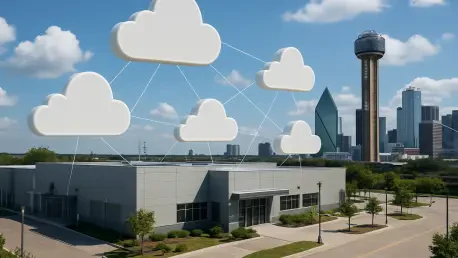In a groundbreaking move that could redefine the technological and economic future of Texas, Google has committed an unprecedented $40 billion to advance artificial intelligence (AI) infrastructure across the state, with the announcement made on November 15 of this year. This investment, extending through 2027, stands as the largest of its kind by Google in any single U.S. state, signaling a transformative era for the Lone Star State. The initiative spans the construction of cutting-edge data centers, sustainable energy and water projects, workforce training, and educational collaborations. Far beyond a mere financial pledge, this plan seeks to establish Texas as a global frontrunner in the AI revolution while tackling local challenges like energy reliability and job creation. As this ambitious project unfolds, its impact promises to resonate across multiple sectors, shaping the state’s trajectory for years to come and potentially setting a model for tech-driven growth nationwide.
Laying the Foundation: AI Infrastructure Expansion
The backbone of Google’s massive investment lies in the development of state-of-the-art AI and cloud computing infrastructure throughout Texas. This includes the construction of three new data centers in Armstrong and Haskell counties, alongside expansions at existing facilities in Midlothian and the Dallas cloud region. These sites will integrate seamlessly into Google’s global network of 42 cloud regions, providing businesses and organizations with the capacity to build and scale AI-powered solutions. Such infrastructure is not merely about hardware; it positions Texas as a critical node in the digital economy, capable of rivaling other tech-heavy states. By enhancing connectivity and computational power, this move ensures that Texas becomes a pivotal player in driving technological innovation, supporting both local startups and international enterprises seeking to leverage AI for growth and efficiency.
Moreover, the strategic placement of these data centers reflects a broader vision to decentralize tech hubs and bring cutting-edge resources to diverse regions of the state. The expansion in rural areas like Armstrong and Haskell counties will likely spur ancillary development, including improved internet access and tech-related services in historically underserved communities. Meanwhile, bolstering facilities in urban centers like Dallas ensures that Texas can meet the demands of high-density business environments. This dual approach not only strengthens the state’s overall tech ecosystem but also aligns with national goals to maintain U.S. leadership in AI amidst fierce global competition. The infrastructure push is a clear signal that Texas is being groomed as a cornerstone for the future of digital innovation, with implications that could redefine regional economic dynamics.
Driving Prosperity: Economic and Workforce Gains
One of the most immediate and tangible effects of Google’s $40 billion commitment is the profound economic boost it promises for Texas. Thousands of new jobs are expected to emerge, ranging from data center operations to roles within the energy sector, providing a lifeline to local economies across the state. This job creation will have a ripple effect, stimulating growth in related industries such as construction, logistics, and retail in the surrounding areas. The influx of employment opportunities also addresses longstanding concerns about economic disparity, particularly in rural regions where new data centers are being established. By fostering a diverse range of positions, Google’s initiative is poised to invigorate communities, offering pathways to financial stability and career advancement for many Texans.
Equally significant is the focus on workforce development to sustain this economic surge. Google has pledged to train over 1,700 electrical apprentices by 2030, directly tackling the growing shortage of skilled labor in technology and energy infrastructure fields. Complementing this effort are educational partnerships with leading institutions like the University of Texas and Texas A&M through the Google AI for Education Accelerator. This program offers free access to career certificates and AI training, ensuring that students and workers are well-prepared for the evolving demands of a tech-driven job market. Such initiatives not only build a robust talent pipeline but also empower individuals with the skills needed to thrive in an increasingly digital economy, securing long-term prosperity for the state’s workforce and positioning Texas as a leader in tech education.
Green Tech Future: Prioritizing Sustainability
Sustainability forms a critical pillar of Google’s investment strategy, addressing Texas’ pressing challenges with energy and water resources through innovative solutions. A standout feature is the co-location of a Haskell data center with a solar and battery energy storage plant, designed to alleviate strain on the state’s often overburdened power grid. Additionally, a $30 million Energy Impact Fund, set to launch in 2026, will support energy projects across Texas, accelerating the transition to cleaner, more reliable power sources. These measures reflect a commitment to responsible growth, ensuring that technological advancement does not come at the expense of environmental stability. By integrating renewable energy into its operations, Google is setting a precedent for how large-scale tech projects can align with ecological priorities.
Water conservation is another focal point, with new facilities employing advanced air-cooling technology to significantly reduce usage in a state frequently plagued by drought. Beyond the data centers, Google is investing over $2 million in agricultural projects, including regenerative farming and irrigation efficiency programs in areas like Dallas-Fort Worth and the Texas High Plains. These efforts not only support local farmers but also contribute to broader water security goals, demonstrating a holistic approach to resource management. The emphasis on sustainability underscores a broader industry trend toward environmentally conscious tech development, positioning Texas as a testing ground for balancing innovation with the urgent need to protect natural resources. This dual focus could inspire similar initiatives elsewhere, highlighting the potential for tech giants to drive meaningful environmental change.
Strengthening Communities: AI for Social Good
Google’s investment extends far beyond infrastructure and economics, aiming to enrich Texas communities through targeted AI initiatives. A notable $7 million in grants will fund projects in healthcare, energy, and education, enabling local nonprofits, academics, and foundations to adopt AI responsibly. These resources are intended to address pressing societal challenges, such as improving healthcare delivery through data-driven insights or enhancing energy efficiency with smart technologies. By supporting such diverse applications, the initiative ensures that the benefits of AI permeate various aspects of daily life, fostering innovation that directly improves quality of life for Texans. This community-centric approach highlights the potential for technology to serve as a tool for widespread social advancement.
Furthermore, the investment seeks to democratize access to AI by equipping individuals and organizations with the necessary skills and tools to thrive in a digital era. Programs tied to these grants focus on building capacity among underrepresented groups, ensuring that the advantages of technological progress are shared equitably across the state. The emphasis on education as a component of community impact also means that future generations will be better prepared to navigate and contribute to an AI-driven economy. This forward-thinking strategy not only strengthens local resilience but also positions Texas as a model for how tech investments can prioritize human development alongside corporate goals. The long-term effects of such empowerment could redefine community dynamics, creating a more inclusive and innovative societal framework.
Reflecting on a Transformative Milestone
Looking back, Google’s $40 billion pledge to Texas stood as a defining moment that reshaped the state’s technological and economic fabric. The comprehensive approach, blending infrastructure growth with workforce training, sustainability, and community empowerment, demonstrated a nuanced understanding of the challenges and opportunities within the region. As the impacts unfolded, the initiative highlighted the potential for tech giants to drive meaningful change when guided by a commitment to balance progress with responsibility. Moving forward, stakeholders should focus on monitoring the rollout of these projects to ensure promised benefits materialize, while exploring ways to replicate successful elements in other regions. Continued collaboration between government, industry, and local communities will be essential to maximize the legacy of this investment, paving the way for sustainable and inclusive growth in the tech landscape.









